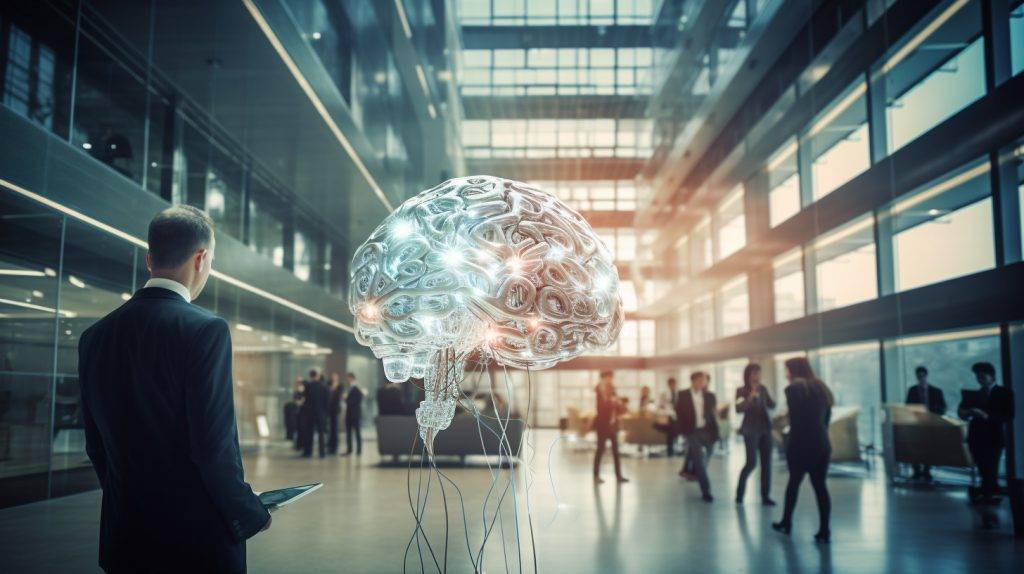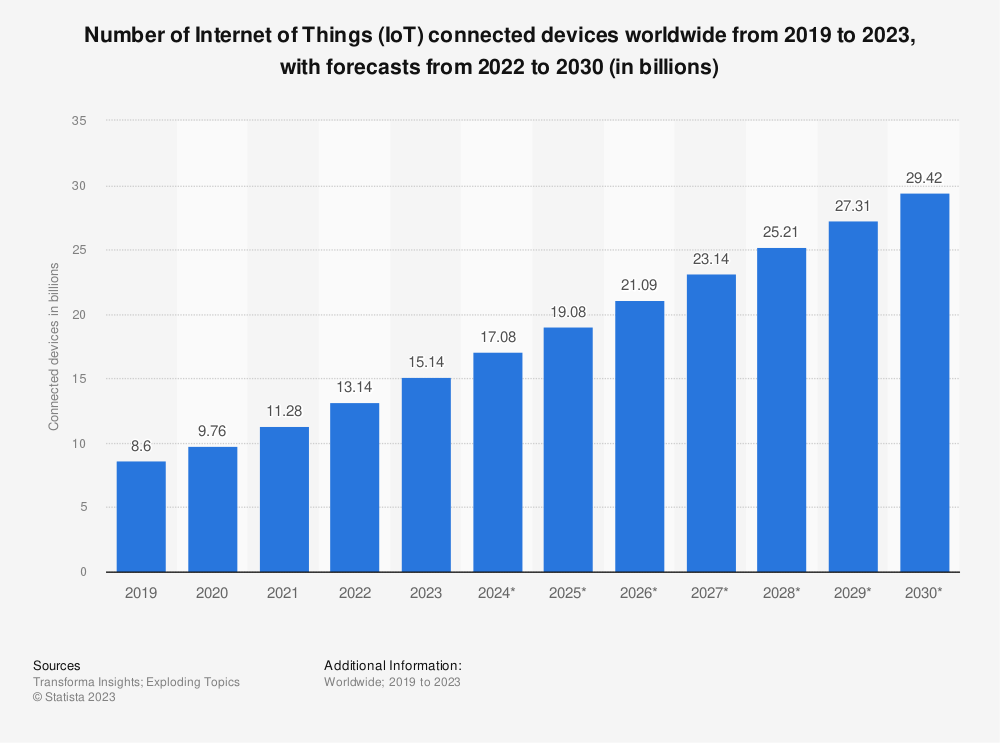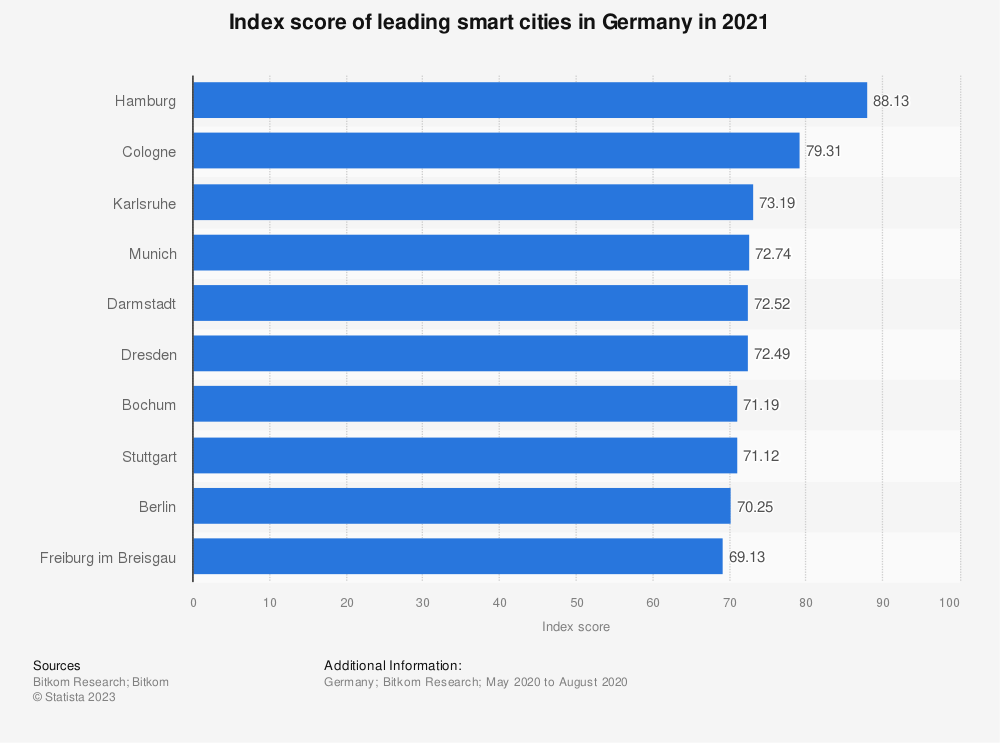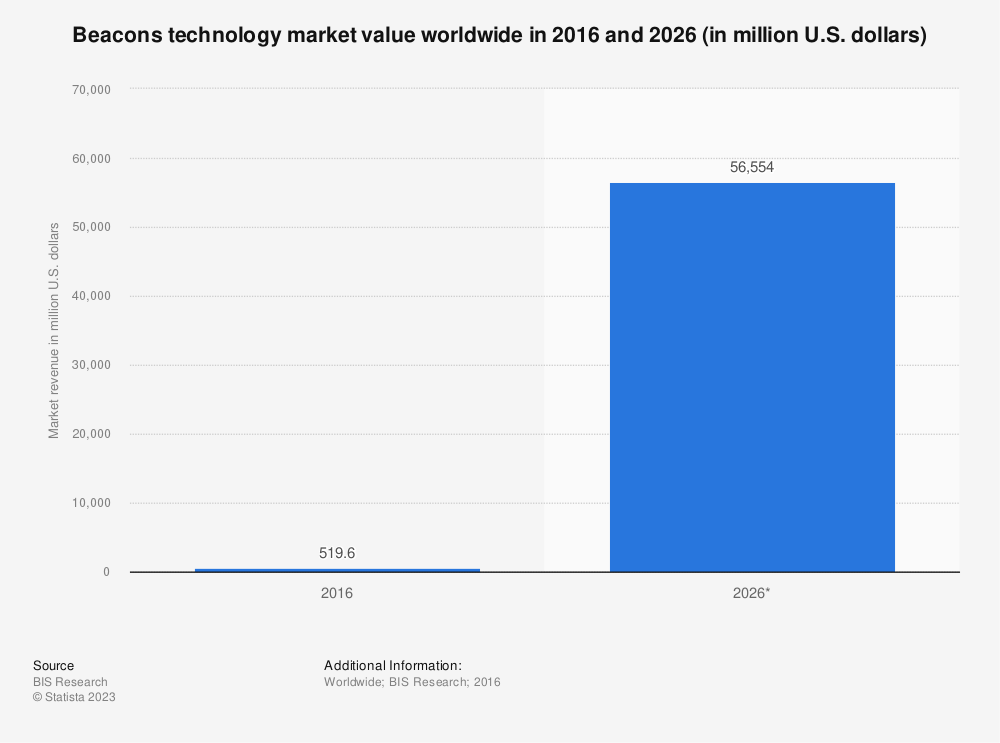
The past few years have witnessed both crises and breakthroughs, driving some acceleration in work culture. However, this doesn’t automatically mean that technology has been updated accordingly. When we consider our work environment, we often find ourselves longing for the kind of comfort, flexibility, and even automation that we have grown accustomed to through smart homes and smartphones. This article will explore various aspects of how artificial intelligence (AI) can enhance our workday in a smart building.
Contents:
- What are the potential applications of AI in smart buildings?
- Examples of value creation for stakeholders
- Closing thoughts
Our latest blog article extensively discussed the synergy between AI and media technology. Today, we would like to showcase a few examples of use cases where we see the potential of combining Artificial Intelligence with smart building solutions. In this context, we are referring more to modern machine learning technologies and the dynamic interpretation of data rather than a machine that has learned to solve problems independently and perhaps even developed consciousness – let’s leave that to the realm of movies and books for now.
The integration of artificial intelligence (AI) and machine learning in smart building technologies offers numerous benefits that are valuable to tenants, employees, guests, property developers, and landlords. After reading this article, you will better understand how AI could enhance your workday now or in the future. We will explore the advantages for users, facility managers, and property developers.
What are the potential applications of AI in smart buildings?
Artificial intelligence, or AI, has the potential to enhance everyday work life significantly. By employing predictive maintenance, for instance, AI can anticipate maintenance needs before they escalate into major issues. This enhances safety and comfort for employees and prevents costly repairs and downtime. Additionally, by automating routine tasks, AI can boost employee productivity, allowing them more time for value-added activities.
AI can be crucial in reducing energy consumption regarding the building’s energy efficiency. AI can determine optimal operating conditions through data-driven learning and automatically make adjustments to save energy. Furthermore, AI can monitor real-time energy usage and raise alarms in case of deviations. For visitors and guests, AI can provide an enhanced experience. Leveraging IoT devices, AI can enable personalized lighting and temperature control, ultimately enhancing comfort and satisfaction.

The general interest in artificial intelligence is on the rise, and with it comes the search for purpose and utility. Integrating AI into smart buildings can create significant added value for real estate developers and landlords. Smart buildings can become more attractive and future-proof investments by improving energy efficiency and reducing operating costs. Furthermore, the ability of AI to enhance building design through generative design techniques can lead to more innovative and efficient structures.
Examples of value creation for stakeholders
Overall, integrating AI and machine learning into smart building technologies can enhance efficiency, productivity, comfort, safety, and the appeal of real estate investments. Let’s explore some application examples that are already feasible, as well as others that may become possible in the near future.
Energy Efficiency Through Artificial Intelligence
Artificial intelligence (AI) can identify patterns in energy consumption and make appropriate adjustments to minimize energy usage while maximizing efficiency. Energy efficiency is pivotal in reducing operational costs and maximizing benefits for all stakeholders, including employees, facility managers, and property owners. Leveraging advanced AI technology, we can now optimize energy consumption in buildings.
Benefits for employees: Employees reap the rewards of an enhanced work environment through AI-powered smart buildings. A conducive atmosphere is created by intelligently controlling lighting and temperature, promoting comfort and productivity. Additionally, energy savings contribute to environmental sustainability, potentially leading to increased satisfaction and an improved corporate image.
Advantages for facility managers: AI empowers facility managers to monitor real-time energy consumption and swiftly adjust as needed. Predictive analytics tools can identify and resolve potential issues early on, mitigating larger energy waste.
Benefits for property owners: For property owners, integrating AI into building technology translates to significant cost savings through enhanced energy efficiency. Moreover, improved energy performance enhances property value and increases attractiveness to potential tenants or buyers.
Technical implementation: The technical implementation of energy efficiency through AI involves the integration of sensors and IoT devices that provide real-time data. Artificial intelligence then analyzes this data to identify patterns and suggest optimal energy settings. Automated feedback loops facilitate the necessary adjustments.
Predictive Maintenance through Artificial Intelligence
By analyzing data from building systems, AI can anticipate when maintenance work is needed, preventing costly repairs and downtime. Predictive maintenance is a crucial aspect of facility management that can be significantly optimized through the use of artificial intelligence (AI).
Benefits for employees: Employees greatly benefit from predictive maintenance as it minimizes potential operational disruptions and downtime. A seamless and pleasant working environment can be maintained thanks to AI-driven predictions of maintenance work.
Advantages for facility managers: Predictive maintenance offers facility managers the advantage of early detection of potential issues in building systems. Instead of reacting to problems, they can proactively address and resolve them before they lead to failures. In addition to regular areas, conference rooms and video conferencing systems can also become part of a maintenance contract.
Benefits for property owners: Predictive maintenance can deliver value by enabling early detection and resolution of problems. This can avoid costly emergency repairs and downtime. Furthermore, predictive maintenance can also help extend the lifespan of facilities and equipment by ensuring they are kept in optimal condition.
Technical implementation: The practical implementation of predictive maintenance using AI involves the use of sensors and IoT devices that continuously capture data on the condition of building systems. Based on this data, AI systems analyze patterns and make predictions about the timing of maintenance work. These forecasts enable efficient planning and execution of maintenance work, even before issues arise.
Enhancing Security and Access Management through Artificial Intelligence
Artificial Intelligence (AI) can leverage facial recognition and anomaly detection to elevate building security. Security and access management are pivotal aspects of facility management that can significantly benefit from the implementation of AI.
Benefits for employees: Teams will experience heightened security and improved access management, contributing to a safe and comfortable working environment. AI-powered systems control access to different areas of the building, ensuring employee safety.
Advantages for facility managers: AI-driven security and access systems provide facility managers with efficient building monitoring capabilities. These systems detect unusual activities and trigger alarms when necessary, enhancing building security and reducing response time to security issues.
Benefits for property owners: The application of artificial intelligence offers numerous benefits to property owners, including increased property security and streamlined access control. Using AI, property owners can swiftly identify and prevent potential threats while regulating access to their premises based on individual criteria.
Technical implementation: Implementing security and access management using AI relies on the utilization of sensors and IoT devices that continuously collect data about the building. AI systems analyze this data, identify patterns, and detect unusual activities. Additionally, AI systems can employ facial recognition technologies to control access to specific areas of the building.
Automated Lighting Control through Artificial Intelligence
AI has the ability to automatically control the lighting in a building based on the time of day and room occupancy. Automated lighting control is a crucial aspect of modern facility management that can be significantly enhanced through the use of artificial intelligence (AI).
Benefits for employees: AI-powered lighting automation can provide substantial benefits for employees. It ensures optimal illumination of workspaces, adjusts to the time of day, and improves working conditions and employee well-being.
Advantages for facility managers: Automated lighting control can help facility managers increase efficiency and reduce operating costs. By using AI systems, lighting requirements can be dynamically adjusted based on daylight and room usage, leading to significant energy savings.

Benefits for property owners: Intelligent lighting technology controlled by artificial intelligence (AI) can increase the value of a property. It saves energy and costs, enhances the well-being and productivity of users, and contributes to environmental protection. AI-powered lighting automation is part of a larger trend of AI-driven automation in various fields.
Technical implementation: For automated lighting control using AI, sensors and IoT devices are utilized. These continuously collect data on lighting conditions and room occupancy. AI systems analyze this information and dynamically adjust the lighting to ensure optimal illumination while saving energy. The technical implementation is achieved through the deployment of the mentioned technologies.
Climate Control Through Artificial Intelligence
Artificial Intelligence (AI) can automatically adjust the temperature and humidity in a building based on weather forecasts, room occupancy, and individual preferences. Implementing AI in building climate control is a significant enhancement that offers various benefits.
Benefits for employees: Automatically adapting the temperature and humidity in the workplace based on weather forecasts, room usage, and personal preferences can create a more pleasant working environment for employees. Optimized room temperature and humidity levels can increase employee satisfaction and productivity.
Advantages for facility managers: AI-driven climate control allows facility managers to manage energy consumption and reduce operational costs efficiently. Continuous monitoring and adjustment of room climate allow for optimized energy usage. This technology enables precise control and effective resource utilization, resulting in substantial cost savings.
Benefits for property owners: AI can potentially improve climate control in smart buildings, benefiting property owners and project developers. AI-based Heating, Ventilation, and Air Conditioning (HVAC) systems can enhance energy efficiency, reduce operating costs, and improve indoor air quality. Furthermore, AI applications in climate modeling, battery development, and power grid optimization can contribute to achieving climate goals. AI-powered smart buildings are more sustainable and more appealing to users and investors.
Technical implementation: The technical implementation of AI-driven climate control involves sensors and IoT devices that continuously collect data on temperature, humidity, and room occupancy. By analyzing this data, AI systems can dynamically adjust the room climate to the current conditions.
Optimizing Movement Flow through Artificial Intelligence
Artificial intelligence (AI) has the ability to analyze and predict traffic patterns within buildings, thereby avoiding congestion in areas such as elevators or corridors. One fascinating application of AI is the optimization of movement flow within buildings. By analyzing people’s movements and usage patterns, we can prevent bottlenecks and improve the overall flow of movement.
Benefits for employees: Implementing AI-driven optimization of movement flow can lead to a more pleasant and efficient working environment for employees. By avoiding congestion, employees can reach their destinations within the building faster and with less hassle, ultimately saving valuable work time.
Advantages for facility managers: Optimizing movement flow is crucial for facility managers as it improves workflow processes and enhances the efficient use of building spaces. By analyzing movement data, tasks such as cleaning and maintenance can be better coordinated.
Benefits for property owners: Efficient management of movement flow can increase the attractiveness of a building for tenants and ultimately enhance the property’s value. A smooth movement flow can also contribute to energy savings by reducing elevator and door usage frequency, for instance.
Technical implementation: The optimization of movement flow with the help of AI is achieved through sensors and IoT devices that continuously gather data on people’s movements and usage patterns. Systems then analyze this data to optimize movement flow within the building.
Intelligent Parking Management Powered by Artificial Intelligence
AI has the potential to revolutionize parking management by monitoring real-time parking availability and assigning vacant spaces to drivers. It offers significant advantages in managing and navigating parking areas, bringing convenience to drivers, and promoting efficient movement in urban areas. AI-powered parking solutions enable better price optimization and revenue management for commercial parking services.
Benefits for employees: AI-driven parking management can alleviate the stress and time associated with finding a parking spot for employees. AI enhances employee comfort and satisfaction by identifying and allocating available parking spaces in real-time.
Advantages for facility managers: AI-powered parking management helps facility managers streamline operations and optimize parking space utilization. Analyzing parking patterns enables them to determine the need for additional parking spaces, among other things.
Benefits for property owners: We all know the struggle of limited parking spaces. Artificial intelligence (AI) can assist smart buildings in optimizing parking management, offering advantages for property owners and developers. AI can predict parking demand, optimize pricing, maximize occupancy, and reduce emissions. By utilizing data analytics, smart buildings enhance the parking experience for users while simultaneously reducing costs and resource consumption for operators.
Technical implementation: Integrating sensors and IoT devices enables the realization of AI-driven parking management. These devices continuously collect data on parking availability and usage. AI systems analyze this data to optimize parking management and navigation.
Efficient Waste Management through Artificial Intelligence
Artificial Intelligence (AI) has the potential to revolutionize waste management by monitoring the fill-level of trash containers and optimizing collection schedules. This innovative approach can significantly improve waste management efficiency, presenting numerous benefits in various aspects.
Benefits for employees: Implementing AI-driven waste management can create a clean and pleasant work environment for employees. By monitoring the fill-level of garbage bins and ensuring timely disposal, AI technology contributes to workplace cleanliness and hygiene.
Advantages for facility managers: AI-driven waste management systems can enhance waste disposal efficiency for facility managers. By monitoring and analyzing waste quantities, intelligent scheduling of collections becomes possible, optimizing resource utilization. The precision of monitoring enables effective waste management strategies, ensuring smooth operations.
Benefits for property owners: Leveraging AI and smart buildings, waste management can support property owners and developers. AI can recognize, sort, dispose of, and recycle waste using various technologies. This improves cost-effectiveness and resource management and enhances environmental sustainability and compliance with regulations.
Technical implementation: AI-driven waste management relies on sensors and IoT devices for continuous data collection on trash container fill levels. Subsequently, AI systems analyze this data to optimize waste collection and disposal processes.
Efficient Water Management through Artificial Intelligence
Artificial Intelligence (AI) has the capability to detect water leaks and unusual water consumption, thereby preventing water wastage. Managing and controlling water usage is an area where AI can bring significant improvements.
Benefits for employees: Employees can benefit from AI-driven water management as it creates a sustainable and environmentally conscious work environment. AI can detect water leaks and unusual water consumption, helping to avoid water wastage and protect the environment.
Advantages for facility managers: AI-driven water management can help facility managers enhance water utilization efficiency. By monitoring and analyzing water consumption patterns, resources can be optimally utilized, resulting in cost savings.
Benefits for property owners: Efficient water management can contribute to the attractiveness of a property for tenants and increase its value for property owners. Good water management can contribute to tenant satisfaction and improve the overall impression of the building.
Technical implementation: AI-driven water management is realized through sensors and IoT devices that continuously monitor water consumption. With the help of AI systems, these data are analyzed to detect and prevent leaks and unusual water consumption.
Efficient Building Inspections Empowered by Artificial Intelligence
Artificial Intelligence (AI) can control drones or robots to conduct building inspections, saving time and cost. The realm of building inspections is yet another area where the benefits of AI can be harnessed.
Benefits for employees: Using AI in building inspections can lead to safer working conditions for employees. By employing drones or robots to perform inspections, potential hazards or deficiencies can be identified and addressed before they become problematic for the workforce.
Advantages for facility managers: AI-driven building inspections can enhance efficiency and cost savings for facility managers. Manual, time-consuming, and error-prone inspections can now be automated precisely.
Benefits for property owners: Automated and intelligent building inspections are a game-changer for the real estate industry. They help preserve or even increase the value of your properties. Regular and adequate inspections can identify and rectify defects early, reducing maintenance costs and appreciating building value. Maximize the potential of your real estate investment.
Technical implementation: AI-driven building inspections are technically realized through the use of drones or robots equipped with sensors and cameras. Subsequently, AI systems analyze the collected data to identify and categorize deficiencies or potential areas of concern.
AI-Enabled Personalized User Experience
Artificial intelligence (AI) can deliver personalized settings for lighting, temperature, and more based on individual user preferences. Creating a tailored user experience is another domain where AI can significantly impact.
Benefits for employees: For employees, a personalized user experience enabled by AI can enhance job satisfaction and productivity. AI can provide customized settings for lighting, temperature, and other environmental parameters, catering to each user’s unique preferences.
Advantages for facility managers: A personalized user experience can assist facility managers in optimizing workspace and utilization as well as reducing operational costs. By leveraging AI, automated adjustments to the building environment can be made, resulting in lower energy waste and cost savings.
Benefits for property owners: Offering a personalized user experience can help property owners increase the value of their real estate. An individualized user experience enhances the appeal of a property to potential tenants, contributing to higher rental income.
Technical implementation: To achieve a personalized user experience, sensors and IoT devices gather data continuously. AI systems analyze this data and make adjustments based on user preferences and habits, creating an optimally tailored environment.
Intelligent Management of Space Allocation and Workplace Booking through Artificial Intelligence
Artificial Intelligence (AI) can monitor real-time room occupancy and efficiently allocate spaces to maximize utilization. The management of room occupancy and workplace bookings is an area where the benefits of AI can be harnessed.
Benefits for employees: An AI-driven space allocation and workplace booking system can increase employee job satisfaction and productivity. Real-time monitoring of room availability empowers employees to find and book the optimal workspace that aligns with their specific requirements and preferences.

Advantages for facility managers: AI-powered space allocation and workplace booking can help facility managers maximize the efficient use of premises and reduce operational costs. Real-time monitoring of room utilization avoids over or under-occupancy, ensuring effective use of spaces.
Benefits for property owners: Efficient management of space allocation and workplace bookings through AI-based solutions can enhance the value of properties. By optimizing space utilization, rental income can be maximized, thus increasing the overall value of the building.
Technical implementation: The technical implementation of an AI-driven space allocation and workplace booking system involves deploying sensors and IoT devices that continuously collect data on room usage. AI systems analyze this real-time data to monitor room occupancy and enable efficient allocation of workspaces.
Reducing Noise and Enhancing Acoustics with Artificial Intelligence
Artificial Intelligence (AI) can monitor noise levels and take measures to reduce them, creating a pleasant working environment. One area where AI can be leveraged is in noise reduction and improving room acoustics.
Benefits for employees: Decreasing noise levels and optimizing room acoustics can significantly enhance employee satisfaction and productivity. AI systems can continuously monitor sound levels and adjust to create a pleasant working environment.
Advantages for facility managers: AI-driven room acoustics management can assist facility managers in optimizing the work environment, increasing employee satisfaction and productivity. An optimized acoustic environment also contributes to stress reduction and overall well-being in the workplace.
Benefits for property owners: Optimized room acoustics can increase property value and attract potential tenants. By utilizing artificial intelligence, optimal acoustic conditions can be achieved, potentially leading to increased rental income.
Technical implementation: The technical implementation of AI-powered noise reduction and room acoustics optimization involves using sensors and IoT devices. These devices continuously collect data on noise levels and the acoustic characteristics of a room. AI systems analyze this data in real-time and automatically adjust it to lower noise levels and achieve optimal room acoustics.
Monitoring Air Quality Through Artificial Intelligence
Artificial intelligence (AI) can monitor air quality in real-time and suggest or automate measures to improve it. Monitoring air quality is a crucial application that can be optimized by implementing AI.
Benefits for employees: AI-driven monitoring and air quality improvement can significantly improve employee satisfaction and productivity. AI systems can continuously monitor indoor air quality and adjust to create a more pleasant work environment.
Advantages for facility managers: AI-driven air quality management can help facility managers optimize the work environment, increasing employee satisfaction and productivity. By improving the indoor climate, overall well-being in the workplace can also be enhanced.
Benefits for property owners: Improving air quality can increase the value of properties by appealing to potential tenants and leading to higher returns. Leveraging advanced technologies enables effective optimization of air quality.
Technical implementation: To conduct air quality monitoring using AI, sensors, and IoT devices are employed to collect continuous data on indoor air. AI systems analyze These data in real-time, which makes adjustments to ensure optimal indoor air quality. The technical realization is achieved through the deployment of corresponding technologies.
Data Visualization and Dashboards Empowered by Artificial Intelligence
Artificial intelligence (AI) has the capability to collect and visualize data from various building systems, enabling effective monitoring and optimization of building operations. Data visualization and dashboard creation represent crucial domains that can be significantly enhanced through the utilization of AI.
Benefits for employees: By leveraging AI-driven data visualization and dashboards, employees can easily access and comprehend key information and metrics about their work in a simple and organized manner. This can boost efficiency, satisfaction, and productivity by simplifying decision-making processes based on data.
Advantages for facility managers: For facility managers, AI-powered data and dashboard management can assist in visualizing and analyzing critical information regarding building infrastructure operations and performance. AI can aid in the early detection and prediction of operational disruptions, enabling proactive maintenance and downtime prevention.
Benefits for property owners: Implementing data-driven visualization and dashboards can contribute to appreciating property value. Well-presented data allows potential tenants or buyers to understand better and assess the benefits and worth of the property.
Technical implementation: Data is collected from diverse building systems to achieve AI-driven data visualization and dashboard creation. Subsequently, AI systems analyze this data and present it in visually appealing dashboards. This real-time monitoring and optimization approach enables effective building management. You have complete control over determining the significance of the data to suit your specific needs.
Closing thoughts
In conclusion, it can be said that interesting scenarios can already be developed today, rather than just in the distant future, to include AI in a new smart building or for an IoT retrofit project, benefiting multiple stakeholders in various ways. While technology may enable endless possibilities, unlocking the maximum potential requires competent consultation on requirements and use cases.